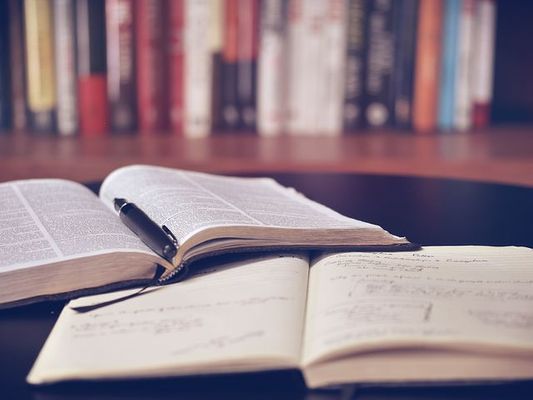6.1.5
Secondary Sources
Secondary Sources
Secondary Sources


Secondary sources
Secondary sources
- These are data collected by other sociologists.
- This makes the research cheaper as researchers have readily available data.
- Researchers can easily triangulate information.
- They provide easily accessible data.


Secondary sources cont.
Secondary sources cont.
- They can be used by researchers to see any social changes that have taken place over the years.
- They can be a good source of information by showing sociologists:
- Examples of good practice.
- Examples of misconduct that should be avoided.


Critical review
Critical review
- Since all secondary sources are works by others, it is unclear how objective they are.
- This means that all secondary sources need to be critically reviewed.


Government statistics
Government statistics
- Even official statistics collected by the government can be biased.
- Governments have been known to manipulate data to serve their own political agendas.


Surveys
Surveys
- Surveys conducted by mass media might be funded by parties who have vested interest to show a manipulated reality.
Types of Secondary Source Material
Types of Secondary Source Material


Official statistics
Official statistics
- Official statistics is data collected by the Office for National Statistics (ONS).
- They depict changes in the number of people living in the country, the number of marriages, divorces, crimes, suicide rates etc.


Population data
Population data
- The census is a population survey that is conducted every ten years to identify the changes that are taking place in British society, such as birth rates, change in family types etc.
- Demography is the study of the population.


Crime Survey for England & Wales (CSEW)
Crime Survey for England & Wales (CSEW)
- CSEW is data collected about people’s experience of crime.
- The difference between CSEW and official crime statistics is that CSEW collects information about crimes that haven’t been reported or recorded by the police.
- This survey helps reveal the dark figures of crime (crimes that go unreported and unrecorded), therefore gives a more accurate picture of the true level of crime.


Historical documents
Historical documents
- Historical documents are useful in depicting changes in marriage and family types.
- These are more widely found in local church records.
- Raw census data is released 100 years after recording.


Life histories
Life histories
- Letters and diaries that include personal details and accounts of people’s daily lives.
- In Young and Willmott's study of 'Symmetrical Family', they used diary notes that they had asked their participants to take.


Mass media
Mass media
- Radio and TV broadcasts, magazines and newspapers are archived.
- This means that they can be a valuable source of data.
- Their content analysis can give sociologists a source of up-to-date data.
1The Sociological Approach
1.1Introduction to Sociology
1.2Sociological Approaches
1.3The Consensus vs. Conflict Debate
2Families
2.1Functions of Families
2.2Family Forms
2.3Conjugal Role Relationships
2.4Changing Relationships Within Families
2.5Criticisms of Families
3Education
3.1Roles & Functions of Education
3.2Processes Within Schools
4Crime & Deviance
4.1The Social Construction of Crime
4.2Social Control
4.3Criminal & Deviant Behaviour
5Social Stratification
5.1Social Stratification
5.2Poverty as a Social Issue
6Sociological Research Methods
6.1Research Methods
6.1.1Research Design
6.1.2The Scientific Method
6.1.3Other Considerations
6.1.4Primary Sources
6.1.5Secondary Sources
6.1.6Surveys
6.1.7Sampling
6.1.8Questionnaires
6.1.9Interviews
6.1.10Observation
6.1.11Statistics
6.1.12Case Studies
6.1.13Longitudinal Studies
6.1.14Ethnography
6.1.15Experiments
6.1.16Small Scale Research
6.1.17End of Topic Test - Research Methods
Jump to other topics
1The Sociological Approach
1.1Introduction to Sociology
1.2Sociological Approaches
1.3The Consensus vs. Conflict Debate
2Families
2.1Functions of Families
2.2Family Forms
2.3Conjugal Role Relationships
2.4Changing Relationships Within Families
2.5Criticisms of Families
3Education
3.1Roles & Functions of Education
3.2Processes Within Schools
4Crime & Deviance
4.1The Social Construction of Crime
4.2Social Control
4.3Criminal & Deviant Behaviour
5Social Stratification
5.1Social Stratification
5.2Poverty as a Social Issue
6Sociological Research Methods
6.1Research Methods
6.1.1Research Design
6.1.2The Scientific Method
6.1.3Other Considerations
6.1.4Primary Sources
6.1.5Secondary Sources
6.1.6Surveys
6.1.7Sampling
6.1.8Questionnaires
6.1.9Interviews
6.1.10Observation
6.1.11Statistics
6.1.12Case Studies
6.1.13Longitudinal Studies
6.1.14Ethnography
6.1.15Experiments
6.1.16Small Scale Research
6.1.17End of Topic Test - Research Methods
Unlock your full potential with Seneca Premium
Unlimited access to 10,000+ open-ended exam questions
Mini-mock exams based on your study history
Unlock 800+ premium courses & e-books